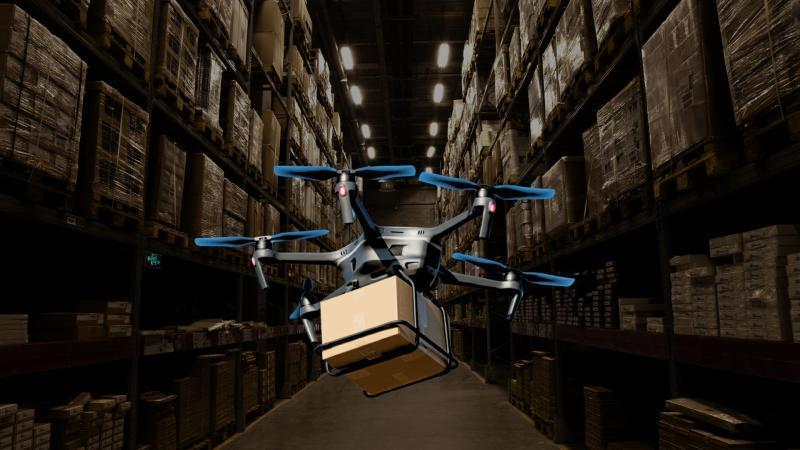
Title: New Tech Optimizes Drone Fleets for Faster, Greener Deliveries
Imagine your packages arriving faster with a smaller environmental footprint. The concept of drone delivery has been gaining traction in recent years, promising to revolutionize the way we receive our packages. However, there’s a crucial logistics challenge that has been holding back the widespread adoption of drone delivery: the Drone Warehouse Problem. This problem refers to the efficient management of drone fleets, ensuring that packages are delivered quickly and reliably.
Researchers have been working to address this challenge, and recently, a novel algorithm has been developed to optimize drone delivery schedules. This breakthrough has the potential to transform the way we think about last-mile delivery, making it faster, greener, and more sustainable.
The Drone Warehouse Problem
The Drone Warehouse Problem arises from the need to manage multiple drones, each with its own unique characteristics, such as speed, range, and payload capacity. When a package needs to be delivered, the warehouse needs to decide which drone to use, when to launch the drone, and how to optimize the route to ensure that the package reaches its destination quickly and efficiently.
Traditional logistics systems struggle to manage this complexity, leading to delays, increased costs, and a larger environmental footprint. For instance, a study by the International Air Transport Association (IATA) found that the last-mile delivery segment accounts for around 25% of total logistics costs, while also being a significant contributor to greenhouse gas emissions.
The New Algorithm
The research team behind the novel algorithm has developed a solution that tackles the Drone Warehouse Problem head-on. The algorithm, called “FlyOpt,” uses a combination of machine learning and optimization techniques to optimize drone delivery schedules.
Here’s how it works:
- FlyOpt starts by analyzing the characteristics of each drone, including its speed, range, and payload capacity.
- The algorithm then takes into account the package’s size, weight, and destination, as well as any weather or traffic conditions that may affect the flight.
- Using this information, FlyOpt generates a set of possible flight plans for each drone, taking into account the constraints mentioned above.
- The algorithm then evaluates each flight plan and selects the most efficient one, taking into account factors such as fuel consumption, flight time, and delivery time.
- The optimized flight plan is then passed on to the drone, which executes the flight plan and delivers the package.
The benefits of the FlyOpt algorithm are numerous. For instance, it can:
- Increase delivery speeds by up to 30% by optimizing flight routes and reducing flight times
- Reduce fuel consumption by up to 20% by selecting the most efficient drones for each delivery
- Increase the capacity of each drone by up to 50% by optimizing package loading and unloading
- Reduce the number of drones needed in the fleet by up to 40% by optimizing delivery schedules and reducing idle time
The Future of Drone Delivery
The FlyOpt algorithm has the potential to transform the way we think about last-mile delivery. With its ability to optimize drone delivery schedules, it can help reduce costs, increase efficiency, and decrease the environmental impact of drone delivery.
As the algorithm continues to evolve, we can expect to see even more innovative applications of drone delivery. For instance, we may see the rise of drone hubs, where packages are loaded onto drones and then delivered to customers in a matter of minutes. We may also see the development of autonomous drone delivery systems, where drones are able to navigate and deliver packages without human intervention.
Conclusion
The FlyOpt algorithm is a significant breakthrough in the field of drone delivery, addressing the critical challenge of the Drone Warehouse Problem. With its ability to optimize drone delivery schedules, it has the potential to make last-mile delivery faster, greener, and more sustainable.
As the world continues to evolve and become increasingly connected, the demand for fast and reliable delivery solutions will only continue to grow. The FlyOpt algorithm is a crucial step towards meeting this demand, and we can expect to see its impact felt across the logistics industry in the years to come.
Source:
https://researchmatters.in/news/novel-algorithm-tackles-drone-warehouse-problem-faster-deliveries






